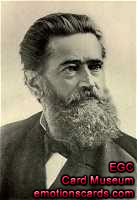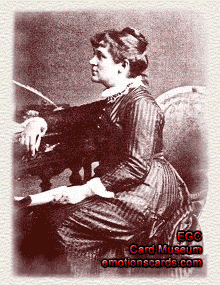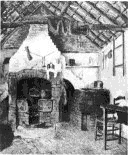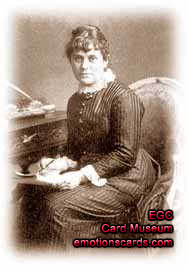Manifesto Movement
I have created a movement that is against the machine age of modern society.
Most people believe that our visual culture is contrasted by the media based on effect. This is done through the use of technology by showing us what we want to see, rather than what should be shown.
Thus technology in art creates imagery that can be considered as being mass media, showing people what they want them to see through manipulating their better judgment with visual aid or imagery
I believe that art should be separated from technology, even though to others this may sound like a limited approach to design, but exploring art through the world is an unlimited source of experience.
Art is considered as conveying interactions, symbolism and expressing the way we as artists see the world and the contents within this world. With technology today, this takes the experienced views of an artist to new heights. Thus the artist manipulates an existing image into something that it is not. This manipulates the artist’s common science of what the artists actually see and as well as what he/she thinks they see. Most believe that art has evolved with technology. One needs to explore how art was expressed through experience rather than a delete button.
Most people believe that religion has a lot of purpose, but mainly to give meaning to human life. This plays a role in how feminism acts in society, most people believe that feminism in South African society is for women to gain control and be empowered by fulfilling men’s needs. We believe than women should be treated more fairly than this, man and women are the perfect ying yang elements that keep the world turning.
This is bullshit!
We, as a society, need to conform to our roots. We have meaning to life; this is the process of living this life. Where have the days gone when death was an honor and not something to be feared?
Fear is simply a state of mind of man. We must learn to control that fear through victory!
This is the movement of living and dying with honor by your side!
Join us on the journey of walking within the light of understanding … Let us tear away from the shadows of doubt.
We are moving away from what society considers as living in times of popularity:
Celebrity weddings- waste of money and technological resources
Money Victoria’s secrets- this is actually nice, brings pleasure to a relationship
Beer bellies- earning money people become lazy and technology helps with making them lazier through making living easy
The perfect body- technology like Photoshop manipulates and exaggerates the human figure for what it really is
Black berries (cellophane) - communication is broken down to a limited source and not building proper relationships with people through interpersonal relationships.
Fitness Hair highlights- what’s the purpose of consuming chemicals in human hair?
Exotic pets- animals should be treated with respect and morals not like toys
Movie stars- we live in a society where celebrities are idolized by people thus being associated by fake ideological beliefs, we see more people in cinemas than churches
WE ARE MORE THAN THIS! We were created for a higher means than this.
Manifesto Movement in sms language
i shaulin lai wai hav created a movement dat is against the machine age of modin society.
most peeple believ dat our visual culture is contrasted by the media based on efect. dis is done through da use of tech by showing us wat we want to see, rather dan what shul be shown.
thus tech in art creates imagry dat can be considid as being mass media, showing people what dey want dem to see through manipulating deir beta judgment with visual aid or imagery
i believ dat art shud be separated from tech, even though to others this may sound like a limited approch to design, but exploring art through the world is an unlimited source of experience.
art is considid as conveying interactions, symbolism and expressing da way we as artists see da world and da contents within das world. wit tech 2day, dis taks the experienced views of an artist to new hights. dis da artist manipulates an existing image into something dat it is not. did manipulates the artist’s common science of wat the artists actually see and as wel as wat he/she thinks dey see. most believ dat art has evolved with tech. 1 needs to explore how art was expressed through experience rather than a delete button.
most people believ dat religion has a lot of purposes, but mainly to give meaning to human life. dis plays a role in how feminism acts in society, most people believe that feminism in SA society is for women to gain control and be empowered by fulfilling men’s needs. We as a movment believ dat women should be treated more fairly dan this, man and women are da perfect ying yang elements dat keep da world turning.
dis is bullshit!
We, as a society, need to conform to our roots. e hav meaning to lyf; dis is the proces of living dis lyf. where have the days gone when death was an honor and not something to be feared?
fear is simply a state of mind of man. we must learn to control dat fear through victory!
dis is the movement of living and dying with honor sid by sid!
join us on da journey of walking within da lit of understanding … let us tear away from da shadows of doubt.
we r moving away from wat society considers as living in times of popularity:
celebrity wedings- wast of money and tech resources
victoria’s secrets- dis is actually nice, brings pleasure to a relationship
beer belies- earning money people become lazy and technology helps with making them lazier through making living easy
da perfect body- technology lik Photoshop manipulates and exaggerates the human figure for wat it really is
black berries (cellfone) - communication is broken down to a limited source and not building proper relationships wit people through interpersonal relationships.
fitness hair highlits- wats the purpose of consuming chemicals in human hair?
exotic pets- animals shud be treated wit respect and morals not like toys
movie stars- we live in a society where celebrities r idolized by people dus being associated by fake ideological beliefs, we see mor people in cinemas dan churches
WE ARE MORE THAN THIS! We were created for a higher means than this.















 PRANG, Louis (1824-1909) was born in Breslau of a French Huguenot father and German mother, and learned to dye print calico in his father's shop. After traveling as a journeyman in Europe, he went to the United States in 1850, a refugee of the revolutionary period. He came well trained as a lithographer and settled in Boston, where he started as a wood-engraver. He also became a lithographer, color-printer and publisher. Soon after the Civil War he began printing chromo lithographs; and during the 1870's he began to issue color reproductions of famous paintings.
PRANG, Louis (1824-1909) was born in Breslau of a French Huguenot father and German mother, and learned to dye print calico in his father's shop. After traveling as a journeyman in Europe, he went to the United States in 1850, a refugee of the revolutionary period. He came well trained as a lithographer and settled in Boston, where he started as a wood-engraver. He also became a lithographer, color-printer and publisher. Soon after the Civil War he began printing chromo lithographs; and during the 1870's he began to issue color reproductions of famous paintings. Catherine (Kate) Greenaway was born on March 17, 1846, at Cavendish Street in London to John Greenaway and Elizabeth Catherine Jones.
Catherine (Kate) Greenaway was born on March 17, 1846, at Cavendish Street in London to John Greenaway and Elizabeth Catherine Jones.
 Kate's father was a friend of Edmund Evans, the color printer. When she showed her portfolio of drawings and poems to Evans, he immediately decided to publish them as a collection. Kate Greenaway passed away on November 6, 1901, surrounded by several of her friends at her bed side. She was 55 years old.
Kate's father was a friend of Edmund Evans, the color printer. When she showed her portfolio of drawings and poems to Evans, he immediately decided to publish them as a collection. Kate Greenaway passed away on November 6, 1901, surrounded by several of her friends at her bed side. She was 55 years old. 














